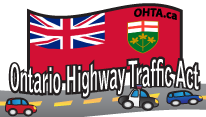Re: S. 149 - Operating To Left Of Centre On Curve
It's an absolute liability offence. You are guilty by the mere act of doing the offence. Strict liabilty deals with public welfare offences. Noise. Smoke. Spills. Etc. An accused charged with a strict liability offence is provided a defence of reasonable mistake of fact and due diligence. Interestingly, the presumption of innocence as guaranteed in s. 11(d) of the Charter is not violated by strict liability offences. The imposition of a reverse persuasive onus on the accused to establish due diligence on a balance of probabilities does not run counter to the presumption of innocence, notwithstanding the fact that the same reversal of onus would violate s. 11(d) in the criminal context. A term of imprisonment attached to a strict liability offence does not violate either ss. 7 or 11(d) of the Charter. The HTA is public welfare or regulatory legislation. The provisions are aimed at keeping bad drivers off the road; they are not prohibitions which are "criminal in the true sense". Criminal offences have always required proof of guilt beyond a reasonable doubt; the accused cannot, therefore, be convicted where there is a reasonable doubt as to guilt. This is not so with regulatory offences, where a conviction will lie if the accused has failed to meet the standard of care required. Thus, the question is not whether the accused has exercised some care, but whether the degree of care exercised was sufficient to meet the standard imposed. If the polluters are to be effectively controlled, it is necessary to require them to show on a balance of probabilities that they took reasonable precautions to avoid the harm which actually resulted. In the regulatory context, there is nothing unfair about imposing that onus; it is essential for the protection of our vulnerable society. It must not be forgotten that the virtual impossibility of proving regulatory offences beyond a reasonable doubt was central to this Court's decision in R v. Sault Ste. Marie, which classified offences 30 years ago, in 1978. In this doctrine it is not up to the prosecution to prove negligence. Instead, it is open to the defendant to prove that all due care has been taken. This burden falls upon the defendant as he is the only one who will generally have the means of proof. This would not seem unfair as the alternative is absolute liability which denies an accused any defence whatever. While the prosecution must prove beyond a reasonable doubt that the defendant committed the prohibited act, the defendant must only establish on the balance of probabilities that he has a defence of reasonable care.
It's an absolute liability offence. You are guilty by the mere act of doing the offence.
Strict liabilty deals with public welfare offences. Noise. Smoke. Spills. Etc.
An accused charged with a strict liability offence is provided a defence of reasonable mistake of fact and due diligence.
Interestingly, the presumption of innocence as guaranteed in s. 11(d) of the Charter is not violated by strict liability offences. The imposition of a reverse persuasive onus on the accused to establish due diligence on a balance of probabilities does not run counter to the presumption of innocence, notwithstanding the fact that the same reversal of onus would violate s. 11(d) in the criminal context.
A term of imprisonment attached to a strict liability offence does not violate either ss. 7 or 11(d) of the Charter.
The HTA is public welfare or regulatory legislation. The provisions are aimed at keeping bad drivers off the road; they are not prohibitions which are "criminal in the true sense".
Criminal offences have always required proof of guilt beyond a reasonable doubt; the accused cannot, therefore, be convicted where there is a reasonable doubt as to guilt. This is not so with regulatory offences, where a conviction will lie if the accused has failed to meet the standard of care required. Thus, the question is not whether the accused has exercised some care, but whether the degree of care exercised was sufficient to meet the standard imposed.
If the polluters are to be effectively controlled, it is necessary to require them to show on a balance of probabilities that they took reasonable precautions to avoid the harm which actually resulted. In the regulatory context, there is nothing unfair about imposing that onus; it is essential for the protection of our vulnerable society.
It must not be forgotten that the virtual impossibility of proving regulatory offences beyond a reasonable doubt was central to this Court's decision in R v. Sault Ste. Marie, which classified offences 30 years ago, in 1978.
In this doctrine it is not up to the prosecution to prove negligence. Instead, it is open to the defendant to prove that all due care has been taken. This burden falls upon the defendant as he is the only one who will generally have the means of proof.
This would not seem unfair as the alternative is absolute liability which denies an accused any defence whatever. While the prosecution must prove beyond a reasonable doubt that the defendant committed the prohibited act, the defendant must only establish on the balance of probabilities that he has a defence of reasonable care.

